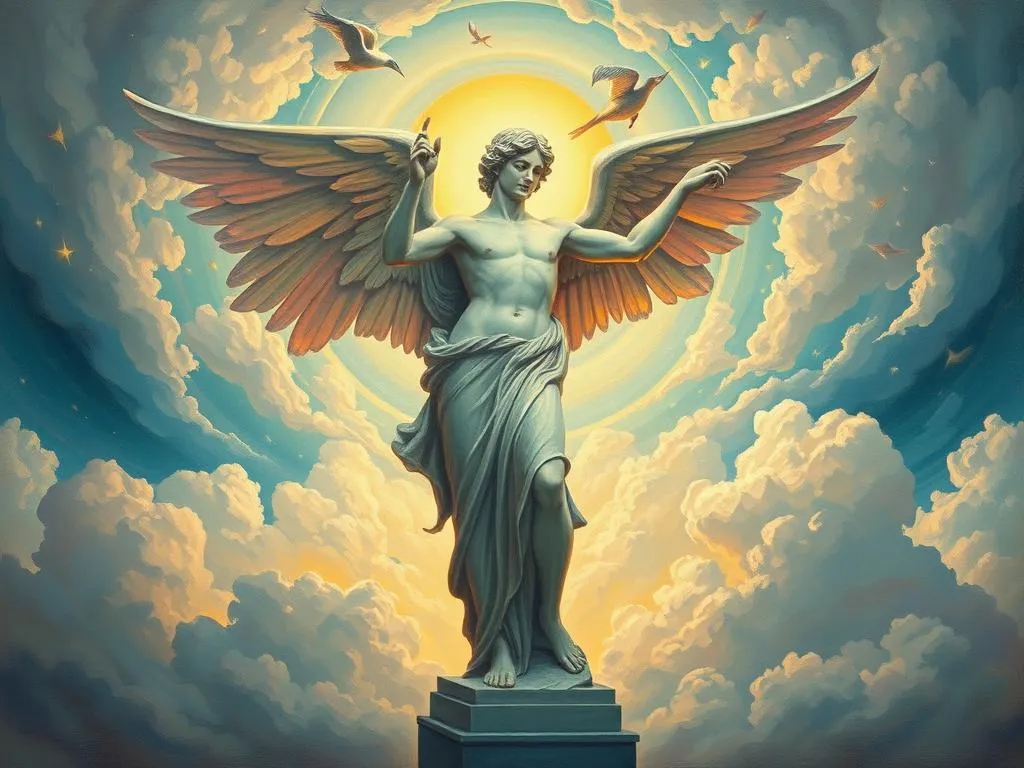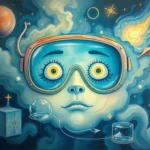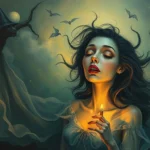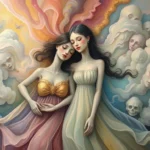
Dreams have long fascinated humanity, providing a window into our subconscious minds. Among the myriad of dream scenarios, the image of a human statue stands out as a particularly intriguing symbol. This dream motif often evokes feelings of awe, curiosity, and sometimes even discomfort. Understanding the significance of this dream can offer profound insights into our inner lives, revealing aspects of ourselves that we may not readily acknowledge.
Symbolism and Meaning
At its core, dreaming of a human statue can symbolize various facets of the self, including identity, stagnation, and idealization. Statues are often perceived as representations of ideals—perfect and unchanging. Thus, when one dreams of a human statue, it might reflect a desire to achieve a certain ideal or perfection in life. This could be linked to personal aspirations or societal pressures that lead individuals to feel they must embody a flawless persona.
On another level, the human statue can symbolize feelings of being frozen or trapped. Just as a statue is immobile and unyielding, dreaming of one may suggest that the dreamer feels stuck in a situation or unable to express their true emotions. This can be particularly poignant if the statue appears lifelike but remains unresponsive. It might indicate a struggle with authenticity, where the dreamer feels they must maintain a façade rather than reveal their true self.
From a psychological perspective, Carl Jung’s theories can lend further insight into this dream symbol. Jung believed that dreams serve as a means for the unconscious to communicate with the conscious mind. The human statue may represent the persona, or the social mask we wear, which can sometimes be at odds with our true self. This dissonance can lead to internal conflict, suggesting that the dreamer might be grappling with their identity or how they perceive themselves in comparison to others.
The material aspect of the statue—its texture, size, and condition—can also influence its meaning. A beautifully crafted statue might signify admiration for beauty or a longing for perfection, while a cracked or weathered statue could symbolize neglect, decay, or a fear of losing one’s identity over time.
Key Scenarios and Variations
The nuances of the human statue dream can vary greatly depending on the scenario in which it occurs. Each variation can shift the interpretation, thereby providing deeper insights into the dreamer’s psyche and current life circumstances.
For instance, if the dreamer finds themselves interacting with the statue—touching it, trying to move it, or engaging in conversation—the dream may reflect a desire for change or a yearning to break free from restrictions. This scenario can suggest that the dreamer is actively seeking to understand or reconcile parts of themselves that they feel are immobilized or unexpressed.
Conversely, if the statue is observed from a distance, it might indicate a passive relationship with one’s aspirations or ideals. The dreamer may feel as though they are merely spectators in their own lives, watching their goals and desires from afar without taking action to achieve them. This distance can be symbolic of feeling disconnected from one’s identity or ambitions, leading to a sense of frustration or resignation.
Another compelling variation is when the dreamer sees themselves as the statue. This surreal experience can be particularly evocative, suggesting themes of self-objectification or the feeling of being judged by others. It may highlight fears of being perceived as one-dimensional or lacking depth. This scenario can also evoke feelings of vulnerability, as being a statue implies a lack of agency and an inability to change one’s circumstances.
Additionally, the setting of the dream plays a significant role. A statue located in a serene garden may evoke feelings of peace and harmony, while one found in a chaotic urban environment could represent confusion and disarray in the dreamer’s life. The contrast between the statue’s stillness and the surrounding chaos may highlight the dreamer’s struggle to maintain composure amidst life’s challenges.
Real-Life Connections and Takeaways
Understanding the symbolism behind the human statue dream can offer valuable insights for personal reflection and growth. To delve deeper into its meaning, readers can engage in self-reflection by considering their current life situations, emotions, and aspirations.
Start by asking yourself questions such as: Do I feel stuck in any area of my life? Am I trying to live up to certain ideals that may not reflect my true self? Reflecting on these questions can help to illuminate the connections between the dream and your waking life.
Moreover, the dream could serve as a prompt to evaluate your relationships with others. Are you presenting a version of yourself that feels inauthentic? Are societal expectations influencing your self-image? By exploring these themes, you can begin to recognize areas where you may want to express yourself more freely or break away from societal norms that feel restrictive.
Practicing mindfulness can also help in navigating feelings of stagnation or disconnection that may arise from this dream. Techniques such as journaling, meditation, or engaging in creative pursuits can facilitate a deeper understanding of your emotions and desires. By embracing these practices, you can cultivate a more authentic connection with yourself and your aspirations.
Additionally, consider setting small, achievable goals that align with your true self rather than the ideals represented by the statue. This can serve as a tangible way to counter feelings of immobility and promote a sense of progress in your life. Taking action, no matter how small, can empower you to break free from the constraints that the dream may symbolize.
Lastly, remember that dreams are highly personal and subjective. While the symbolism of the human statue can provide general insights, your individual experiences and emotions will ultimately guide the interpretation. Reflecting on your feelings and associations with the imagery in your dream will yield the richest understanding.
In conclusion, the human statue in dreams invites us to explore our identities, aspirations, and the tensions between authenticity and societal expectations. By engaging with this dream symbol and its various interpretations, we can uncover deeper truths about ourselves, fostering personal growth and self-discovery. As you reflect on your own experiences, consider how the lessons from your dreams can inform your waking life and lead you toward a more fulfilling existence.







